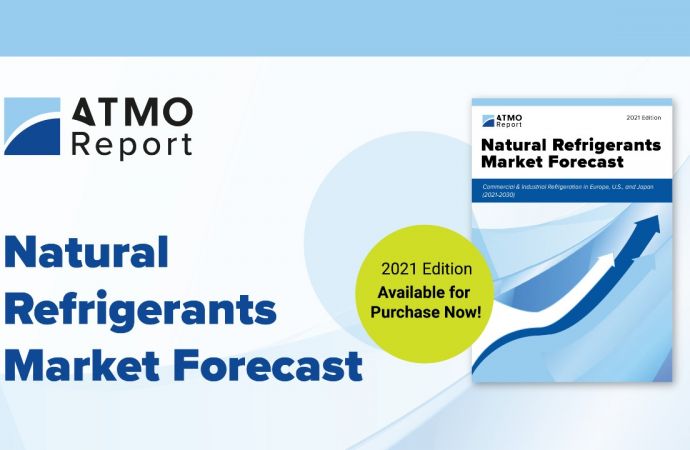The Parties to the Montreal Protocol met in Austria last week for the 40th Meeting of the Open-ended Working Group to discuss implementation of the Kigali Amendment. shecco, publisher of this website, reports from Vienna.

With the Kigali Amendment to the Montreal Protocol on phasing down hydrofluorocarbons (HFCs) poised to enter into force on 1 January 2019 after surpassing the required ratification threshold, the Parties met last week (11-14 July) in Austria to identify barriers and opportunities for its swift implementation. shecco, publisher of this website, reports from Vienna.
The Open-end Working Group (OEWG) is organised annually by the United Nations Environment Programme to provide scientific and technical assessments. The Vienna meeting was also about preparing the agenda of the 30th Meeting of the Parties to the Montreal Protocol (MOP 30), to be held in November 2018 in Quito, Ecuador.
Natural refrigerants to boost energy efficiency
Improving energy efficiency while phasing down HFCs was one of the key topics discussed in Vienna, with a two-day workshop organised prior to the meeting (9-10 July, 2018) dedicated to that topic.
A number of country representatives showed strong interest in assessing the properties, availability and energy efficiency potential of natural refrigerants.
“Some representatives criticised the workshop for being too general in relation to the topic of energy efficiency, with insufficient focus on the direct link between energy efficiency and the HFC phase-down,” states the official report of the meeting published by the United Nations Ozone Secretariat.
While the workshop mainly focused on the importance of training and system optimisation to enhance energy efficiency, some representatives outlined the need to focus on HFC alternatives and their potential to improve energy consumption to fulfil the Parties’ obligations under the Kigali Amendment.
The Technology and Economic Assessment Panel –an advisory body to the Montreal Protocol Parties – said it would update its report on the topic accordingly. The final report will be presented at MOP 30 (5-9 November 2018).
All Parties are responsible for implementing their own f-gas policies, and are seeking to encourage the adoption of alternative refrigerant-based equipment through financial, training or awareness-raising programmes.
A better analysis of natural refrigerants’ properties and their potential to improve energy efficiency while phasing down HFCs could, therefore, lead to significant market opportunities.
Leapfrogging to natural refrigerants
Another key topic was the potential for developing countries, which are still phasing out hydrochlorofluorocarbons (HCFCs), to invest directly in low-GWP alternative refrigerant-based equipment as replacements, bypassing HFCs.
Several issues were raised as meriting further consideration at MOP 30, including the cost of natural refrigerant-based equipment, related standards and norms, knowledge transfer for technicians and engineers, and to ensure adequate supply of HCFCs and stockpiles as they are phased down.
The Parties stressed the need to avoid double conversions (converting from HCFCs to HFCs only have to phase down HFCs later), which could jeopardise their countries’ compliance with the Kigali Amendment in the long term.
The Parties agreed to establish a contact group – an informal grouping of the powers that have a significant interest in developing policies related to the topic – to discuss the issue further. The contact group will present its conclusions at MOP 30.
Representatives of Burkina Faso, Bahrain, the Gambia and Nigeria, among others, expressed their strong interest in supporting the adoption of natural refrigerant-based equipment in their country.
This growing interest in the potential of natural refrigerants in developing countries also represents a good opportunity for wider uptake of natural refrigerants globally.
Responding to CFC-11 raising emissions
As reported on this website, the Environmental Investigation Agency (EIA) released a report providing evidence that the ozone-depleting chemical CFC-11, which was banned in 2010, continues to be used by 18 different companies in China.
Parties to Montreal Protocol unanimously adopted a call for definitive identification of sources. The Scientific Assessment Panel – the scientific arm of the Montreal Protocol – will provide to the parties a summary report on the increased emissions of CFC-11, including additional information regarding atmospheric monitoring and modelling linked to these emissions.
To corroborate the EIA’s assertions, the Technology and Economic Assessment panel was also tasked to identify potential sources of emissions of CFC-11 and related controlled substances from production and uses, as well as from banks, that may have resulted in emissions of CFC-11 in the relevant regions.
The panels were tasked with delivering comprehensive findings to MOP 30 in November 2018.
All parties agreed to submit relevant scientific and technical information on related emissions monitoring by 1 March 2019.
Related stories




